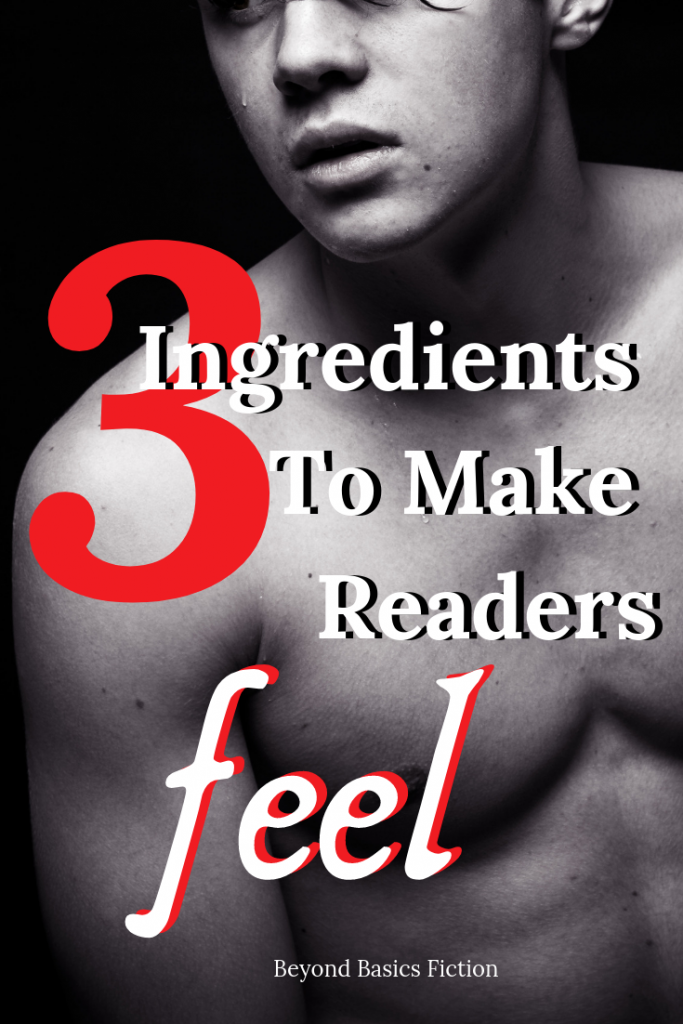
Adding layers of meaning for readers behind the dialogue (between the lines) adds some rich texture, conflict, authenticity, and understanding to story.
Subtext is the silent conversation that happens while another topic is being discussed. Subtext can use euphemisms and other diversionary tactics to have a private or intimate conversation in public—when we need this to mean that.
Shared Knowledge Affects Dialogue Through Subtext
Shared knowledge is the heart of subtext between two characters who know each other. Those private shared-experiences and conversations, expectations – history, colors and influences how much subtext they can use in public. Consider two criminals who have a conversation about a topic that’s understood between them.
Bad Guy #1: You do it?
Bad Guy #2: Yeah.
Bad Guy #1: Any problems?
Bad Guy #2: Nothin’ I couldn’t handle.
Did they just kill someone or take out the trash? Without the subtext, or an understanding of the shared knowledge they’re talking about, there’s no way for an outsider to interpret what they’re really talking about (the outsider in this case could be the cleaning lady, or the law enforcement listening through a wire tap).
Either way, adding layers of meaning for readers behind the dialogue adds some rich texture, conflict, authenticity, and understanding to the story. The key for subtext to work though is for the reader to know what’s actually being discussed. Even if one character misinterprets things, or they miss a signal – what cues would another person give (that are observable) to tip them off that they’ve got something wrong, wires are crossed, etc?

Writing Non-Verbal Communication
Watch the non-verbal communication between two people who know each other well, who share a history, and you’ll realize they have entire conversations without words (think of couples, siblings, or best friends). The better two people know one another, the subtler the communication becomes because of familiarity with facial expressions and attitudes, but also because of a shared history.
Teen girls are perhaps the best at this in an exaggerated, easy to observe way.
What if your POV character is the one who is misunderstanding or missing cues? What could the person they’re communicating with do (gestures, facial expressions, posture) to tip them off they’re not connecting? A face scrunched up? Hands waving? Arms crossed – intense stare? Maybe they’re more subtle and simply go quiet, won’t look at the other person, tap their foot, add physical distance so they don’t touch. If you’ve ever dated or had a significant other for more than 5 minutes, you know what these cues are, either you’ve used them or had them used on you.
Intimacy Influences Subtext
The more characters share experiences, the more subtext we can include. Let’s face it, some silent conversations are not very subtle at all. A husband taps his watch and glares at his wife across the room. That is not subtle at all, but the husband is being blatant on purpose.
Intimacy allows us to make unspoken demands on another’s time or actions. The wife’s response however, could be just as blatant — “Oh, I’m getting the look. Better go. See you tomorrow girls” — or she could simply raise her brows to acknowledge the gesture and turn away. I’m not ready to go yet, be mad if you want to.
Capturing these small conversations authentically in fiction adds a new dimension of reality and authenticity that pulls readers into the story.
Watch these the body language in this scene. It opens with a couple of previous misunderstandings trying to be sorted out, what was intended and what was perceived. And then they share an inside joke and the body language changes, the posture, and facial expressions are different. Watch for these subtle cues between people in real life so you can use them in your fiction.
One of the best examples of how intimacy affects subtext, for me, is in Diana Gabaldon’s Outlander series. Claire and Jamie have entire conversations with just facial expressions because they have so much shared history. This scene when Jamie first meets his daughter, Brianna – there’s a lot of subtext going on. Questions, doubts, fears—so much wrapped up in expressions, a few gestures, and not enough words. Watch the subtle facial expressions, gestures, even their body posture and tone of voice – see how the actors utilize all of this to capture or express everything that’s not being said!
What movie or book have you seen intimacy influence the subtext really well?
Been told you should learn Deep Point Of View? Had an editor or critique partner tell you to “go deeper” with the emotions in your fiction? Looking for a community of writers seeking to create emotional connections with readers? Check out the Free Resource Hub and then join the Going Deeper With Emotions In Fiction Facebook group.
Comments (5)